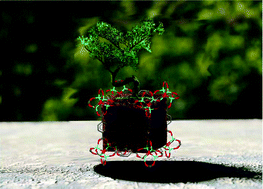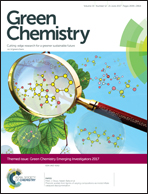Metal–organic frameworks meet scalable and sustainable synthesis
Abstract
Over the past decade, metal–organic frameworks (MOFs) have emerged as enabling materials for a wide variety of sustainable technologies, leading to their recent commercialisation. However, whereas the commercialisation of MOFs and a large fraction of their potential applications are directed towards roles as “green materials” for a sustainable future, this is dependent on the availability of synthetic and manufacturing procedures mindful of sustainability and environmental impact. While the need for clean and sustainable methodologies has been embraced by organic synthesis and catalysis more than a decade ago, such development has been significantly slower in inorganic and metal–organic synthesis. At the same time, the environmental challenges of metal–organic chemistry are unique, as they combine the environmental impacts of organic chemistry with hazards associated with metal ions, their salts, and complexes. The recent and ongoing commercialisation of MOFs is signalling an urgent need to address these challenges. In this review we highlight recently developed evaluative criteria for green, sustainable, and industrially-acceptable metal–organic chemistry, along with six areas of recent experimental and theoretical progress that are relevant for developing cleaner, sustainable MOF synthesis: (1) using safer and/or biocompatible building blocks, (2) reducing energy input (3) using water or near-critical water as reaction media, (4) strategies to avoid bulk solvent, (5) continuous manufacturing and (6) theoretical prediction and design of MOF performance for given applications.

- This article is part of the themed collections: 2017 Green Chemistry Hot Articles and Green Chemistry 2017 Emerging Investigators


 Please wait while we load your content...
Please wait while we load your content...